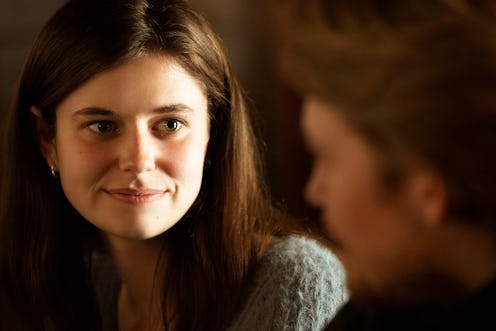TV & Movies
Why You're Seeing "Waif Girl" All Over Your TikTok Feed
2022’s answer to the Manic Pixie Dream Girl, if you will.

This week, the internet has been ablaze discussing the return of a character dubbed as the Waif Girl – prompted in part by the release of the latest Sally Rooney TV adaptation, Conversations With Friends, and its brooding main character Frances. If you’ve been skimming the literary discourse and wondering WTF everybody is on about, consider this your quick York Notes explainer.
To understand the Waif Girl, we must first delve into the backstory. In 2019, an essay by Rebecca Liu – titled The Making Of A Millennial Woman – may not have coined the term, but it definitely skewered a lot of its key elements and nailed down the essence of what it means. “One of the few things associated with millennials to have received a positive public reception is a particular form of millennial art,” Liu writes. “This art revolves around an archetypical Young Millennial Woman – pretty, white, cisgender, and tortured enough to be interesting but not enough to be repulsive. Often described as ‘relatable,’ she is, in actuality, not.”
Elsewhere, Liu discussed further the fact that these kinds of tortured, imperfect protagonists are nearly always middle-class white women: “For every celebration of a rich white woman as carelessly destructive with her life as her privileged male counterparts, we should ask what it is that gives her the ability to be so brazen, and who is sidelined as collateral.”
TikTokkers have have been parodying a similar aesthetic they’ve branded “waif core” since last year. Loosely speaking, it describes slim, white women who cultivate a sense of mystery and gloom while blasting Lana Del Rey at top volume and reading The Bell Jar. Many of Sally Rooney’s female protagonists have been singled out as the embodiment of the waif core trend.
That gives a rough idea of where the term came from, but Waif Girl itself seems to have been coined by The Independent. According to the paper’s Roisin O’Connor, a Waif Girl is “a tormented young woman who can’t help but question why anyone bothers with anything at all,” and you’ll find her everywhere from the classic novels of Victorian author Emily Brontë to Twilight’s drizzly setting of Fork, Washington.
O’Connor continues, “Waif Girl in contemporary film, TV and literature is a barrel of contradictory tropes: she is ‘painfully skinny’ but still attractive; she insists she is boring but still succeeds in fascinating those around her; she is normal but extraordinary (for no clear reason); smart without trying (but never a geek, as much as she might claim to be); socially awkward but the centre of attention; drab but hot; sexless but sexy; virginal but seductive.”
So, there you have it. Think of the Waif Girl as 2022’s answer to the Manic Pixie Dream Girl, if you will.